
OpenCV是跨平台的,用于实时计算机视觉和图像处理。它是最好的开源库之一,可以帮助开发人员专注于构建完整的图像处理、运动检测和图像分割项目。
这个综合的三合一课程是一个使用OpenCV 3和Python开发真实世界计算机视觉应用的循序渐进的教程。使用OpenCV库的不同特性,用Python编写高级计算机视觉应用程序。通过使用Python在OpenCV 3中开发真实世界的项目,增强您的计算机视觉和图像处理知识。Opencv: Master Opencv 3 Application Development Using Python
Opencv:使用Python掌握Opencv 3应用程序开发
MP4 |视频:h264,1280×720 |音频:AAC,44.1 KHz
语言:英语+中英文字幕(云桥网络机译)|大小:4.35 GB 含课程文件 |时长:9小时18分钟
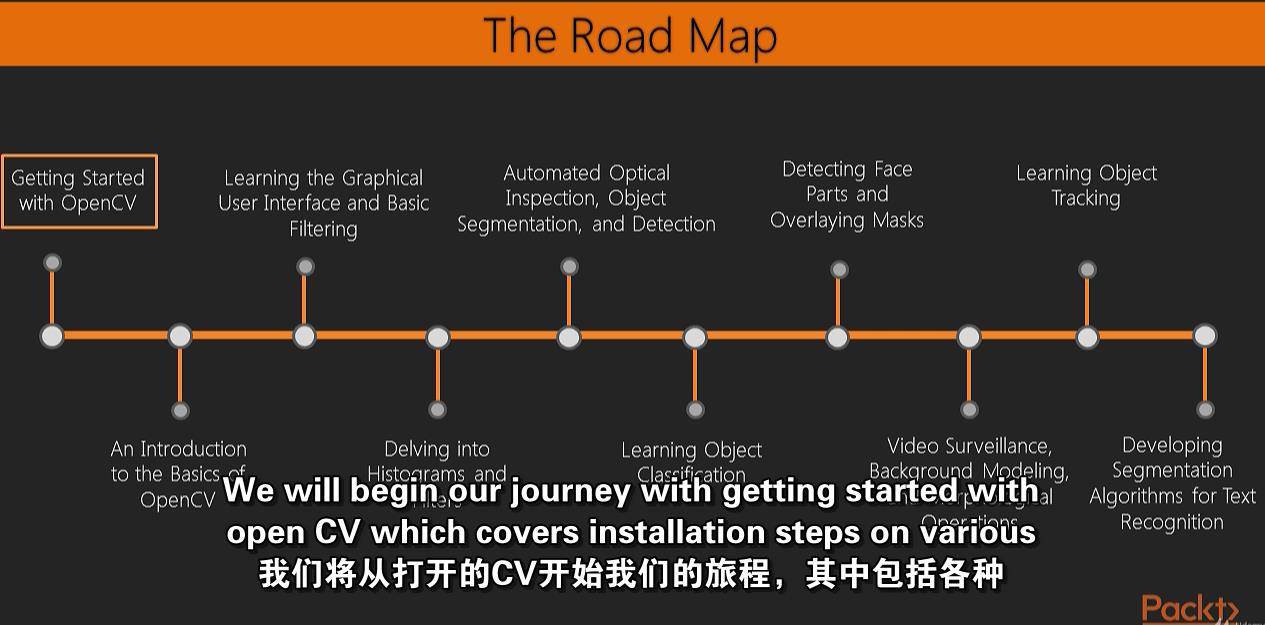
你会学到什么
基于特征提取从头构建图像搜索引擎
使用基于情感的自拍滤镜构建一个Android自拍相机应用程序
构建一个Android应用程序来生成具有HDR和AR功能的全景图
学习如何让汽车在模仿学习的基础上学会自动驾驶
使用Tesseract探索用于文本检测和识别的新OpenCV函数
掌握计算机视觉工作流程,了解基本的图像矩阵格式和过滤器
要求
假设您熟悉OpenCV的概念和Python库
Python编程的基础知识是预期的和假定的。
对计算机视觉和图像处理的基本理解将是有用的
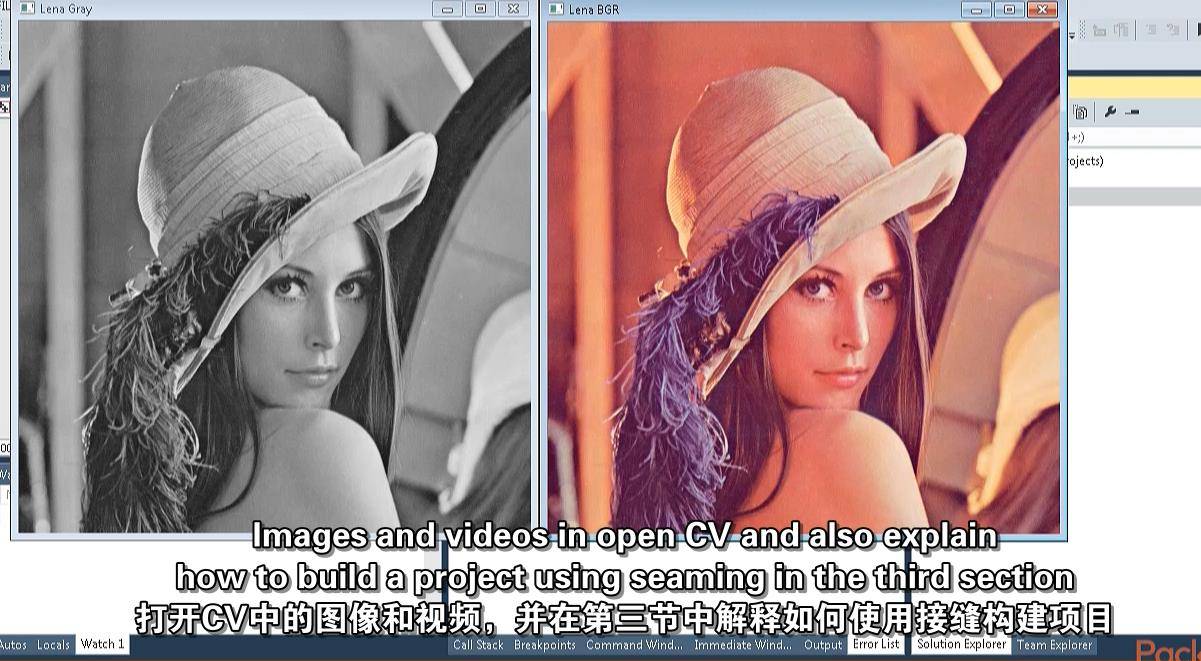
内容和概述
该培训计划包括3门完整的课程,经过精心挑选,为您提供尽可能全面的培训。
第一个课程是OpenCV 3示例,通过在OpenCV 3中开发真实世界的项目,涵盖了计算机视觉和图像处理的实用方法。本课程将教授您OpenCV的基础知识,如矩阵运算、过滤器和直方图,以及更高级的概念,如分割、机器学习、复杂视频分析和文本识别。您将创建复杂场景中的光流视频分析或文本识别,并学习计算机视觉技术来从头构建您自己的OpenCV项目。
第二个课程,使用Python的实用OpenCV 3图像处理,涵盖了使用OpenCV 3的惊人的计算机视觉应用程序开发。本课程将教你如何使用OpenCV和Python开发一系列中高级项目,而不是在理论课上讲授OpenCV的核心概念。本视频中开发的工作项目教你如何将理论知识应用于图像处理、增强现实、对象跟踪、3D场景重建、统计学习和对象分类等主题。
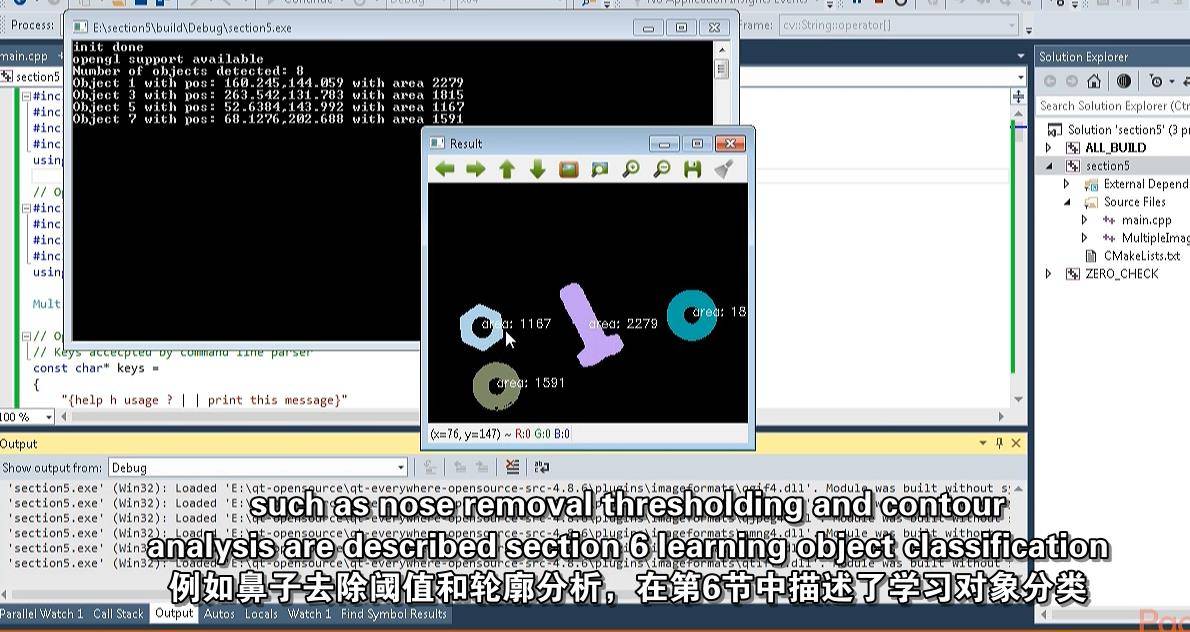
第三个课程是面向智能移动应用的TensorFlow Lite实践,涵盖了使用Python开发高级OpenCV3项目。本课程将教你如何通过拼接多幅2D图像和恢复相机投影角度来进行三维重建。你将学会捕捉面部标志点,识别图像中的情感,包括实时识别。您将生成一个场景的全景,并用虚拟对象增强摄像机视图。
在课程结束时,您将提高您的计算机视觉和图像处理知识,并使用Python在OpenCV 3中开发真实世界的应用程序。
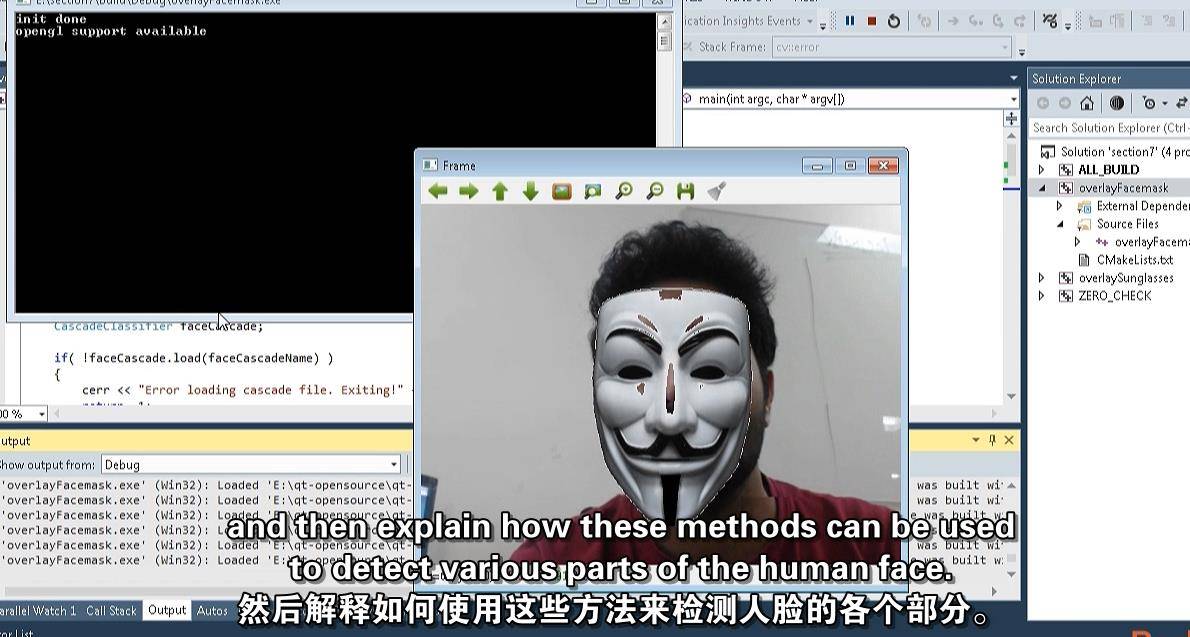
关于作者
David Millán Escrivá在8岁时用Basic语言在8086 PC上编写了第一个程序,使基本方程的2D绘图成为可能。2005年,他以优异的成绩完成了瓦伦西亚理工大学的计算机视觉支持的人机交互课程。他有一个基于这个主题的最终项目,并在HCI西班牙大会上发表。作为一名计算机图形软件开发人员,他参与了开源3D软件项目Blender,并制作了他的第一部商业电影Plumiferos-Aventuras volado rasas。David现在拥有10多年的IT经验,在计算机视觉、计算机图形和模式识别方面经验丰富,参与过不同的项目和初创企业,应用了他在计算机视觉、光学字符识别和增强现实方面的知识。他是DamilesBlog的作者,在那里他发表了关于OpenCV、一般计算机视觉和光学字符识别算法的研究文章和教程。大卫评论了李·菲利普斯写的书gnuPlot Cookbook,Packt Publishing。
Prateek Joshi是一名人工智能研究员,出版了五本书,是TEDx的演讲者。他是Pluto AI的创始人,Pluto AI是一家由风险投资资助的硅谷初创公司,为深度学习提供支持的智能水管理构建一个分析平台。他在这一领域的工作带来了专利、技术演示和在主要IEEE会议上的研究论文。他是技术和创业会议的特邀演讲人,包括TEDx、美国电话电报公司铸造、硅谷深度学习和开放硅谷。Prateek也是著名科技杂志的特邀作者。他的技术博客已经收到了来自200多个国家的超过120万次页面浏览,拥有超过6600名粉丝。他经常撰写关于人工智能、Python编程和抽象数学等主题的文章。他是一个狂热的程序员,利用各种各样的技术赢得了许多黑客马拉松比赛。他毕业于南加州大学,硕士学位,专业是人工智能。他曾在英伟达和微软研究院等公司工作。你可以在他的个人网站上了解更多关于他的信息。维尼修斯·戈多伊是PUCPR的计算机图形大学教授。他18年前开始用C++编程,10年前涉足计算机游戏和计算机图形领域。他以前的经历还包括在Sinax(一家专注于BPM和ECM活动的公司)担任文档处理应用程序的IT经理,为Positivo Informática开发游戏和应用程序,包括为Siemens Enterprise communication s(Unify)开发CEBIT和网络图书馆上展示的增强现实教育游戏。作为硕士学位研究的一部分,他使用Kinect、OpenNI和OpenCV来识别巴西手语手势。他目前正在为他的博士论文研究医学成像系统。他也是帕克特出版社出版的OpenNI烹饪书的评论家。他也是一个游戏开发爱好者,有一个完全致力于该领域的流行网站,名为Ponto V。他是一家名为Black Muppet的初创公司的联合创始人。他的兴趣领域包括图像处理、计算机视觉、设计模式和多线程应用程序。
Riaz Munshi拥有纽约布法罗大学的计算机科学学士和硕士学位。他是计算机视觉和机器学习的爱好者。Riaz在解决移动性、计算和增强现实领域的挑战性问题方面拥有3.5年的经验。他在计算机科学方面有坚实的基础,在数据结构、算法和软件设计方面有很强的能力。目前,他作为一名软件工程师在雅虎工作,探索利用AR的力量控制机器人的用例。他通过全息图远程指导机器人,使机器人工作效率更高。
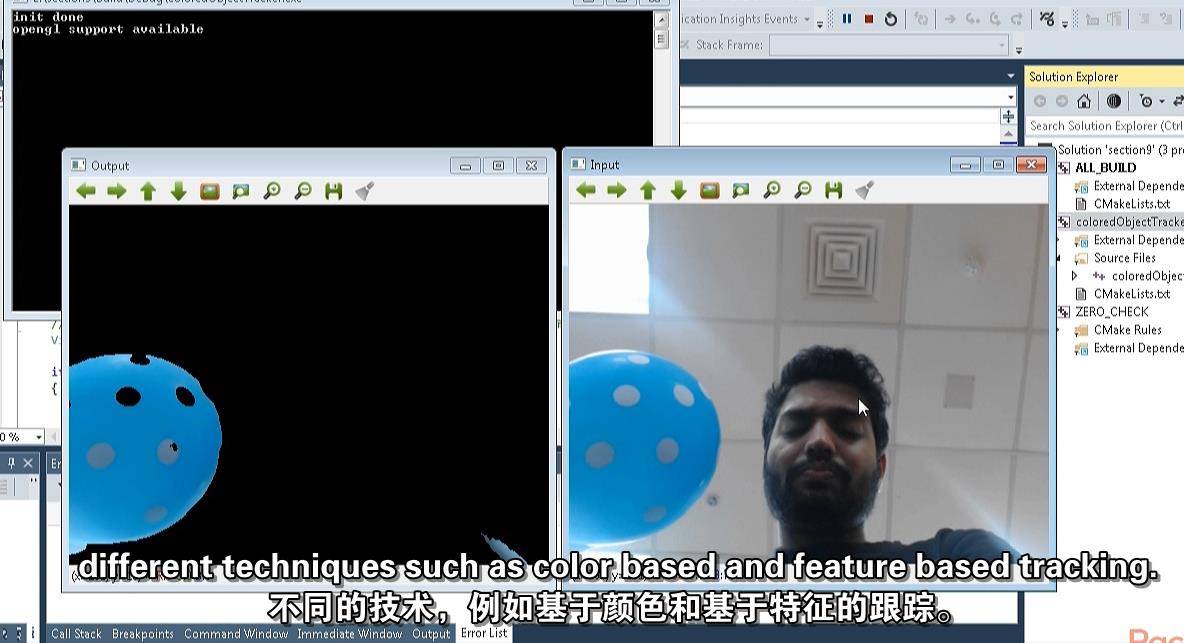
Build computer vision OpenCV 3 applications with Python
What you’ll learn
Build an Image Search Engine from Scratch based on feature extraction
Build an Android selfie camera app with emotion-based selfie filters
Build an Android App to generate panoramas with HDR and AR capabilities
Learn how to make a car learn how to drive itself based on imitation learning
Explore the new OpenCV functions for text detection and recognition with Tesseract
Get to grips with the computer vision workflows and understand the basic image matrix format and filters
Requirements
Familiarity with OpenCV’s concepts and Python libraries is assumed
Basic knowledge of Python programming is expected and assumed.
Basic understanding of computer vision and image processing will be useful
Description
OpenCV is a cross-platform, used for real-time computer vision and image processing. It is one of the best open source libraries that helps developers focus on constructing complete projects on image processing, motion detection, and image segmentation.
This comprehensive 3-in-1 course is a step-by-step tutorial to developing real-world computer vision applications using OpenCV 3 with Python. Program advanced computer vision applications in Python using different features of the OpenCV library. Boost your knowledge of computer vision and image processing by developing real-world projects in OpenCV 3 with Python.
Contents and Overview
This training program includes 3 complete courses, carefully chosen to give you the most comprehensive training possible.
The first course, OpenCV 3 by Example, covers a practical approach to computer vision and image processing by developing real-world projects in OpenCV 3. This course will teach you the basics of OpenCV such as matrix operations, filters, and histograms, as well as more advanced concepts such as segmentation, machine learning, complex video analysis, and text recognition. You’ll create optical flow video analysis or text recognition in complex scenes, and learn computer vision techniques to build your own OpenCV projects from scratch.
The second course, Practical OpenCV 3 Image Processing with Python, covers amazing computer vision applications development with OpenCV 3. This course will teach you how to develop a series of intermediate-to-advanced projects using OpenCV and Python, rather than teaching the core concepts of OpenCV in theoretical lessons. Working projects developed in this video teach you how to apply theoretical knowledge to topics such as image manipulation, augmented reality, object tracking, 3D scene reconstruction, statistical learning, and object categorization.
The third course, Hands-on TensorFlow Lite for Intelligent Mobile Apps, covers development of advanced OpenCV3 projects with Python. This course will teach you how to to perform 3D reconstruction by stitching multiple 2D images and recovering camera projection angles. You’ll learn to capture facial landmark points and recognize emotion in images, including in real time. You’ll generate a panorama of a scene and augment a camera view with virtual objects.
By the end of the course, you’ll boost your knowledge of computer vision and image processing and develop real-world applications in OpenCV 3 with Python.
About the Authors
David Millán Escrivá was eight years old when he wrote his first program on an 8086 PC with Basic language, which enabled the 2D plotting of basic equations. In 2005, he finished his studies in IT through the Universitat Politécnica de Valencia with honors in human-computer interaction supported by computer vision with OpenCV (v0.96). He had a final project based on this subject and published it on HCI Spanish congress. He participated in Blender, an open source, 3D-software project, and worked on his first commercial movie Plumiferos – Aventuras voladorasas, as a Computer Graphics Software Developer. David now has more than 10 years of experience in IT, with experience in computer vision, computer graphics, and pattern recognition, working on different projects and start-ups, applying his knowledge of computer vision, optical character recognition, and augmented reality. He is the author of the DamilesBlog, where he publishes research articles and tutorials about OpenCV, computer vision in general, and Optical Character Recognition algorithms. David has reviewed the book gnuPlot Cookbook, Packt Publishing, written by Lee Phillips.
Prateek Joshi is an Artificial Intelligence researcher, the published author of five books, and a TEDx speaker. He is the founder of Pluto AI, a venture-funded Silicon Valley startup building an analytics platform for smart water management powered by deep learning. His work in this field has led to patents, tech demos, and research papers at major IEEE conferences. He has been an invited speaker at technology and entrepreneurship conferences including TEDx, AT&T Foundry, Silicon Valley Deep Learning, and Open Silicon Valley. Prateek has also been featured as a guest author in prominent tech magazines. His tech blog has received more than 1.2 million page views from over 200 countries and has over 6,600+ followers. He frequently writes on topics such as Artificial Intelligence, Python programming, and abstract mathematics. He is an avid coder and has won many hackathons utilizing a wide variety of technologies. He graduated from University of Southern California with a Master’s degree, specializing in Artificial Intelligence. He has worked at companies such as Nvidia and Microsoft Research. You can learn more about him on his personal website.Vinícius Godoy is a computer graphics university professor at PUCPR. He started programming with C++ 18 years ago and ventured into the field of computer gaming and computer graphics 10 years ago. His former experience also includes working as an IT manager in document processing applications in Sinax, a company that focuses in BPM and ECM activities, building games and applications for Positivo Informática, including building an augmented reality educational game exposed at CEBIT and network libraries for Siemens Enterprise Communications (Unify). As part of his Master’s degree research, he used Kinect, OpenNI, and OpenCV to recognize Brazilian sign language gestures. He is currently working with medical imaging systems for his PhD thesis. He was also a reviewer of the OpenNI Cookbook, Packt Publishing. He is also a game development fan, having a popular site entirely dedicated to the field called Ponto V. He is the cofounder of a startup company called Black Muppet. His fields of interest includes image processing, Computer Vision, design patterns, and multithreaded applications.
Riaz Munshi has a Bachelor’s and a Master’s degree in Computer Science from University of Buffalo, NY. He is a computer vision and machine learning enthusiast. Riaz has 3.5 years’ experience working on challenging problems in mobility, computing, and augmented reality. He has a solid foundation in Computer Science, with strong competencies in data structures, algorithms, and software design. Currently he works at Yahoo as a software engineer, exploring use-cases that harness the power of AR to control robots. He makes robots perform more efficiently at their job by guiding them remotely via holograms.
1、登录后,打赏30元成为VIP会员,全站资源免费获取!
2、资源默认为百度网盘链接,请用浏览器打开输入提取码不要有多余空格,如无法获取 请联系微信 yunqiaonet 补发。
3、分卷压缩包资源 需全部下载后解压第一个压缩包即可,下载过程不要强制中断 建议用winrar解压或360解压缩软件解压!
4、云桥网络平台所发布资源仅供用户自学自用,用户需以学习为目的,按需下载,严禁批量采集搬运共享资源等行为,望知悉!!!
5、云桥网络-CG数字艺术学习与资源分享平台,感谢您的赞赏与支持!平台所收取打赏费用仅作为平台服务器租赁及人员维护资金 费用不为素材本身费用,望理解知悉!


